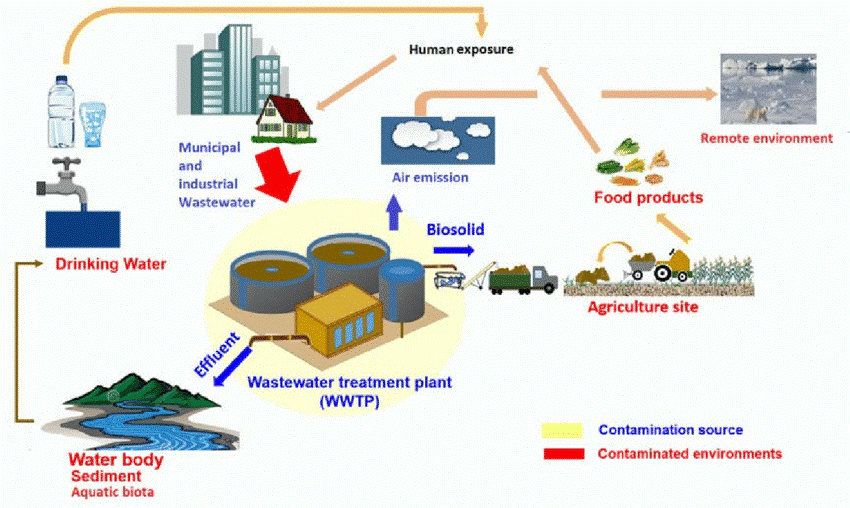The Importance of PFAS Treatment in Cleaning Contaminated Water
Your Overview to PFAS Treatment Technologies and Conveniences
The occurrence of PFAS contamination in water resources demands a comprehensive understanding of offered therapy innovations. Each innovation not just targets specific PFAS compounds yet additionally plays a crucial function in boosting total water quality and safeguarding environmental integrity.
Understanding PFAS Contamination
Comprehending PFAS contamination is essential for addressing its prevalent effect on environmental and human health (m270 pfas treatment). Per- and polyfluoroalkyl compounds (PFAS) are a group of synthetic chemicals widely utilized in numerous commercial and customer items because of their water- and grease-resistant homes. Typically found in firefighting foams, non-stick cooking equipment, and water-repellent materials, PFAS have actually entered the setting via production processes, wastewater discharges, and seeping from landfills
As soon as launched, these compounds continue the environment, resulting in extensive contamination of soil and water resources. Their special chemical framework, characterized by strong carbon-fluorine bonds, provides them immune to deterioration, leading to a phenomenon referred to as "for life chemicals." Consequently, PFAS can gather in the human body and the food cycle, potentially triggering damaging wellness results, consisting of immune system disturbance, developmental problems, and a boosted risk of particular cancers.
Governing firms and wellness companies are increasingly identifying the significance of PFAS contamination, triggering initiatives to keep an eye on, evaluate, and minimize its effects. Understanding the pathways of PFAS contamination is vital for notifying public law and establishing reliable techniques to protect both ecological and human health and wellness.
Introduction of Therapy Technologies
Various therapy modern technologies have been created to deal with the challenges posed by PFAS contamination in water and soil. These technologies can be generally identified right into a number of classifications, each with its one-of-a-kind devices and effectiveness in eliminating PFAS compounds.
One prominent technique is ion exchange, which uses resin materials to capture and get rid of PFAS from infected water. Another modern technology, progressed oxidation procedures (AOPs), uses solid oxidants and ultraviolet light to damage down PFAS into much less unsafe compounds.

Triggered Carbon Purification
Triggered carbon purification is an extensively utilized technique for the removal of PFAS from polluted water, recognized for its ability to adsorb a broad variety of organic compounds. This modern technology utilizes triggered carbon, an extremely porous product with an extensive surface, which helps with the binding of PFAS particles with physical adsorption. The efficiency of activated carbon in getting rid of PFAS is affected by numerous elements, including the sort of carbon made use of, the call time, and the focus of PFAS in the water.
Among the benefits of turned on carbon filtering is its convenience; it can be executed in numerous configurations, such as granular turned on carbon (GAC) systems or powdered turned on carbon (SPECIAL-INTEREST GROUP) systems. GAC systems are normally used in larger-scale applications, while PAC can be utilized in smaller sized or momentary configurations. The innovation is reasonably easy to operate and maintain, making it accessible for several water treatment facilities.

Ion Exchange Systems
Ion exchange systems represent an additional reliable technique for the elimination of PFAS from infected water, matching techniques like activated carbon purification. These systems operate the principle of exchanging ions in the water with ions hung on a resin product. Ion exchange materials can be especially developed to target the negatively charged PFAS substances, successfully capturing them and permitting cleaner water to go through.
Among the primary advantages of ion exchange systems is their capacity to remove a large range of PFAS, including both long-chain and short-chain versions. This flexibility makes visit their website them suitable for numerous applications, ranging from community water treatment to commercial procedures. Furthermore, useful reference ion exchange systems can commonly achieve reduced detection limitations for PFAS contrasted to some other therapy techniques, thus boosting water high quality.
However, it is necessary to monitor and manage the regeneration of ion exchange media, as the performance can decrease in time as a result of saturation. Proper upkeep and replacement of the material are important for sustaining the system's efficiency. On the whole, ion exchange systems offer a trusted and effective solution for PFAS removal, contributing significantly to safe alcohol consumption water criteria and environmental management.
Advanced Oxidation Processes
Advanced Oxidation Processes (AOPs) use effective oxidants to efficiently deteriorate PFAS substances in infected water. These cutting-edge treatment methods create highly responsive types, such as hydroxyl radicals, that can break down complicated PFAS molecules right into much less unsafe results. m270 pfas treatment. AOPs commonly utilize mixes of ultraviolet (UV) light, ozone, hydrogen peroxide, or Fenton's reagent, boosting the oxidation potential and enhancing destruction effectiveness
The main advantage of AOPs hinges on their capability to target a broad range of PFAS substances, including both long-chain and short-chain variants. This adaptability is important, as PFAS contamination commonly includes combinations of various compounds with differing chemical frameworks. Furthermore, AOPs can be integrated into existing water treatment systems, making them a practical option important source for several towns and sectors.
Nonetheless, the implementation of AOPs can be resource-intensive, calling for careful consideration of functional prices and power usage. In addition, while AOPs are effective in damaging down PFAS, they might not entirely eliminate all results, demanding additional therapy actions - m270 pfas treatment. In general, AOPs represent an encouraging opportunity for resolving PFAS contamination, contributing to cleaner water resources and enhanced public health protection

Conclusion
By choosing the proper technology, neighborhoods can enhance water high quality, safeguard public wellness, and alleviate the ecological dangers linked with PFAS direct exposure. Proceeded research and implementation of these approaches are crucial for reliable management of PFAS contamination in affected locations.